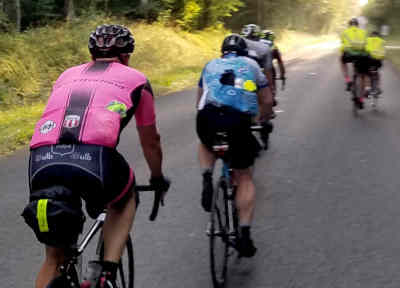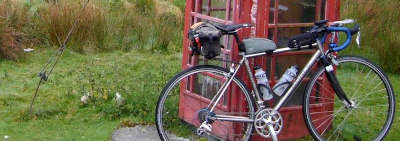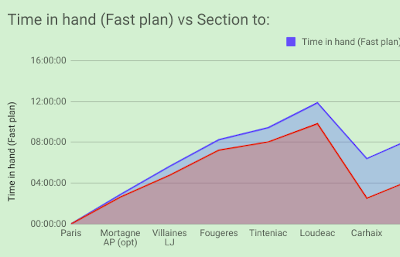James Thinks
writing is a kind of thinking
Bright colours make cyclists easier to see. That's common sense and, with a few caveats, backed up by the evidence. So conversely, cyclists wearing dark colours such as black or grey are harder for other road users to see.
This seems like an obvious safety issue and is probably why I often hear from people complaining about how irresponsible, even stupid, cyclists are to wear black. One person even suggested I might want to shout at other cyclists who aren't visible enough on the roads.
Not black and white
I think wearing bright colours in the day and retroreflective material at night is good advice and it's what I do in most situations as you can see in the photo above. Also, bicycles, like all road vehicles, should have appropriate and legal lighting after dark.
However, I would never criticise another cyclist for wearing black, nor would I support any law that compels them to wear high vis clothing.
Why not?
The arguments are subtle, so I hope you'll bear with me.
Where responsibility lies
All road users are expected to avoid collisions, even with dark-coloured objects. If there are animals wandering in the road, a fallen tree or other non-human hazards, they must be seen and avoided. So we, as road users, must be able to stop for these hazards and others which are not specifically designed for us to see easily. That might be difficult sometimes, such as in the dark or the fog. In that case we have to slow down until we can be sure of avoiding a collision. Perhaps we could go faster if every possible hazard was lit up like a Christmas tree and we could see it sooner, but that is neither practical nor fair. Instead we must travel at a speed that allows us to avoid cows or derbis in the road.
We don't criticise people for driving black cars
For some reason this complaint is levelled most often at cyclists. Occasionally pedestrians are similarly chided, but I've yet to see any of this ire directed at the drivers of black and dark-coloured cars.
In case you're wondering, yes dark-coloured cars are involved in more collisions. The difference is that a car involved in a collision it is far more likely to kill another person than a bicycle is. This is mostly due to physics - cars are heavier and often moving faster so do more damage. Most of the risk for a cyclist in dark colours is to themselves.
For anyone genuinely interested in road safety, cyclists wearing black seems a strange thing to fixate on.
Don't exaggerate the dangers
Cycling is often depicted as a dangerous activity. Mandating safety equipment such as helmets or hi vis clothing reinforces that. In reality, as this thorough article explains, by cycling "you’re less likely to be killed than you are by walking a similar distance" - although other injuries are more likely.
Cycling should be seen as a normal way to get around as it is in the Netherlands. People should be able to get on a bike and go somewhere regardless of what clothing they're wearing, just as pedestrians and people on public transport do. Adding special safety equipment makes cycling more expensive and less convenient as well as making it feel dangerous.
Giving people the impression that a healthy activity like cycling is dangerous discourages people from doing it. There's plenty of evidence that the health benefits of cycling outweigh the risks. If people are put off cycling, then even more lives will be lost through heart disease, diabetes and other illnesses exacerbated by sedentary lifestyles.
In the long run vicitim-blaming doesn't improve safety
In a collision between a car and a bicycle, it is likely that the cyclist will be hurt more than the driver. It seems fair to consider the cyclist the victim in the majority of collisions. Asking potential victims to change their behaviour to stay safe is not reasonable and suggests they are partly to blame. That further entrenches car culture. When clothing recommendations come from official sources, they can influence road traffic legal cases, as Cycling UK have pointed out.
For a glimpse of how bad that car-first thinking can get, consider the pedestrian crossing flags found in some parts of the USA.
Brightly coloured flags are provided beside crosswalks for pedestrians to wave as they cross the road. This is believed to help catch drivers attention sooner and keep them safe. People are having to take extra measures to compensate for drivers' carelessness. Pedestrians are not the problem, careless drivers are. Before long it could become expected that all pedestrians will be carrying flags, so drivers can pay even less attention and go faster still.
As Tom Flood puts it: "We ask everyone outside of the car to be safe so that drivers can be dangerous".

James Bradbury
I write about whatever is on my mind. I do so mostly to help me think more clearly. If other people find it interesting that's good too. :-)
Wearing bright colours in the day and retroreflective material at night is good advice
Dark-coloured cars are involved in more collisions
Cycling should be seen as a normal way to get around







